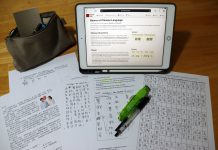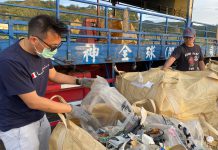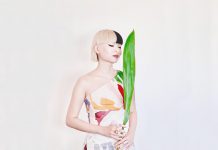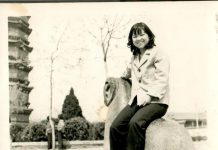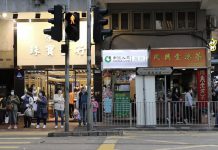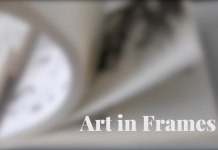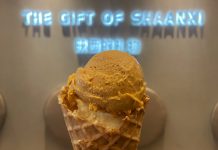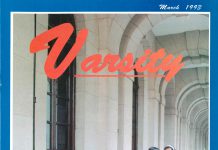Meet Hong Kong’s cheongsam collectors
by Elaine Tsang
Opening an ordinary black suitcase, a young man smiles and takes out the dresses from his exquisite collection. From the pile of embroidered cheongsams, Helius Yuen Kin-wai picks out his favourite piece.
“It has the longest history within my collection,” Yuen explains of his choice, a sheer blue lace cheongsam. “Also, its design really represents the era which it comes from, the 1920s and 1930s.”
Yuen started collecting cheongsams when he was 20 and now, at only 28, he has more than 700. He was just 11, however, when he fell in love with them thanks to an old photo which showed how the dresses can turn any woman into a star.
Yuen was not a motivated student. He attended a vocational school where he fell in with a bad crowd and spent much of his days roaming the streets.
“I only studied until Form Two,” Yuen says. “[You could say] it was playfulness or naughtiness; I stopped going to school when I was about Form Three.”
At the time, Yuen had no education, no job, and no meaningful goal in life. It was only after he took up a part-time job as a sales assistant that he realised he had to find some life goals for himself. It was this search that led to his cheongsam collection.
Yuen’s current devotion to the cheongsam can be attributed to his friend and mentor Joel Chung Yin-chai, a famous toy collector.
“When I first met him, he was my boss. I was a salesperson selling clothes then,” Yuen explains. “A boss who sells clothes should be very well-dressed and tidy. But every time I saw him, he was carrying rubbish.”
Yuen was curious about Chung’s litter-picking habit and discovered Chung was picking through rubbish to find anything that was related to Hong Kong culture; old photos, stationery and in particular, toys. He told Yuen that things that others threw away could be prove useful to him. Bearing that in mind, Yuen decided to follow Chung on his search.
“When you pick something up you need to clean it, to put it somewhere safe. You must do research and understand the historical meaning behind the object,” Yuen explains. That was when he began to think about his ambition to collect cheongsams, and to learn something about Hong Kong.
This would later influence Yuen’s own beliefs as a collector of cheongsams.
Yuen began to look for cheongsams on the street. Whenever people moved out of their homes and threw away rubbish, he would carefully look through it to see if there were any cheongsams inside.
“I learnt two things from [Chung],” Yuen says. “Observation and persistence. These are the two skills I have used to collect cheongsams until today.”
Hailing from a different age and different background, Vera Waters could not be more different from the trendy young man with the black suitcase, but the two share the same wide-eyed passion for the dresses.
Waters was an early leader of Hong Kong’s beauty and grooming industry and is the director of a skincare brand in Hong Kong. But when it comes to sharing her love for cheongsams, the graceful and immaculate 77-year-old is happy to sip jasmine tea and enthuse about how she believes the cheongsam can spread and illustrate Chinese culture.
“The cheongsam will never be outdated,” says Waters, who has been wearing the cheongsam ever since she was a teenager and insists on wearing one every other day.
Waters, who founded Hong Kong’s first beauty and charm school in 1965, believes the cheongsam accentuates a woman’s femininity and figure.
“The cheongsam fits the body shape very well.” Waters says.
Like Yuen, Waters is an avid cheongsam collector and connoisseur. Unlike Yuen, her dresses are not picked out from the rubbish but fitted and hand-tailored by master tailors. She owns more than 360 pieces, many with matching jackets, and her wardrobe is filled with cheongsams for all seasons in all colours. Attaching great value to the importance of mixing and matching, she owns hundreds of individual jewellery pieces to go with her cheongsam of the day, most of which are genuine diamonds and precious stones.
“[Wearing the cheongsam] can be seen as having a kind of individuality,” Waters says. “While everyone else wears suits, I wear cheongsams. It could be said to be unique.”
Waters’ cheongsams exude quality, luxury, elegance and beauty. But for Helius Yuen, the magic of the cheongsam is the glamour they can bring to even the most modest of wearers and backdrops. He recalls he first became aware of their mysterious power when he was 11 and came across a photo of his grandmother wearing a cheongsam. He was impressed by the splendour of the picture.
“I asked [my grandmother]: Who is this star?” Yuen says.
When he found out “the star” was actually his grandmother, he was amazed by how the cheongsam could make such a transformation. It was then that he started looking up information in the library and learning about the history of the cheongsam.
Although the cheongsam is seen as the quintessential Chinese garment, it was actually introduced to China by the Manchus during the Qing dynasty. The original garments were loose and baggy and were worn by Banner people (the name given to the tribes under the Manchu military system) or Qi ren. This is why they are called “qipao” in Mandarin. Over time, the garments became more form fitting.
Originally in Chinese, “cheongsam” referred to the men’s garment only. The traditional dress women wear was called “qipao”. But when the designed was brought to the English-speaking world, people used both words to refer to the women’s wear.
They became fashion items for Han Chinese women in the early 20th century and were influenced by western fashions, leading to the modern version which was developed in Shanghai in the 1920s.
When refugees from Shanghai came to Hong Kong after the revolution, they brought their fashions with them. Gloria Wong Zing-yi, assistant professor from the Institute of Textile and Clothing at the Hong Kong Polytechnic University says cheongsams became popular in Hong Kong in the 1960s.
Wong explains that during that time, only the affluent could afford to wear the cheongsam. The vast majority of the people did not have the time or the money to wear them, except for special occasions. Back in those days, the cheongsam was a garment that had much value and significance.
While some may find it rather unusual to collect cheongsams, Wong, like many other cheongsam designers, appreciates both Waters’ and Yuen’s passion.
Choi Wing-yin, a fashion design lecturer from the Institute of Textile and Clothing at the Hong Kong Polytechnic University, says it is not easy to be a collector in Hong Kong, “Some Chinese are afraid that the things collected will have spirits living in them. There are lots of taboos.”
Besides superstitions, Yuen has also encountered prejudice.
“At first, my friends teased me. They thought [my cheongsam collection] was abnormal. Why should I take girls’ clothes home?”
Preserving his cheongsams is another problem. Yuen explains that it is difficult to keep a cheongsam in good condition for a long time because the material gets mouldy easily. Also, he needs space to house his extensive collection.
Despite these difficulties, collecting cheongsams is still important to Yuen.
With money, he could purchase more for his collection but that is not what collecting means to him. Rather, it is the process of learning about the stories behind every dress and making new friends that Yuen values.
While Yuen continues to piece together Hong Kong’s past with old cheongsams, local designers are drawing on the past to make new cheongsam designs.
“As a designer, especially a Hong Kong Chinese, [we] should have a deep exploration of our own history,” says Polytechnic University’s Gloria Wong. “Without history, there can be no future.”
In order to make the cheongsam wearable in today’s climate, designers like Wong try to incorporate traditional and modern elements into their cheongsam designs so that a new generation will wear and love them.
“I hope young people will not resist wearing the cheongsam, and will feel cool in it instead,” Wong says.
Despite these efforts to update the cheongsam, Helius Yuen feels the value of the dress has disappeared in today’s modern society. Just as the old industries faded away when Hong Kong transformed into a financial city, so too has the cheongsam, according to Yuen. With fewer than 20 Shanghai master cheongsam tailors left in Hong Kong, he believes that it will be difficult to revive their popularity again.
However, Yuen hopes that people will want to learn more about the cheongsam in Hong Kong. Although he is disappointed about its declining popularity, Yuen believes that as long as the cheongsam is used for special occasions, the form will continue to exist. After all, in the eyes of foreigners, the cheongsam represents Chinese women.
Collecting cheongsams has given the once aimless street-kid a goal in life. The goal is to collect these dresses so that he can hand them down to the next generation. He says that his collection belongs to the people of Hong Kong.
“I will keep collecting cheongsams until I get old, for as long as I can.” Yuen says.
Edited by Sabrina Poh












